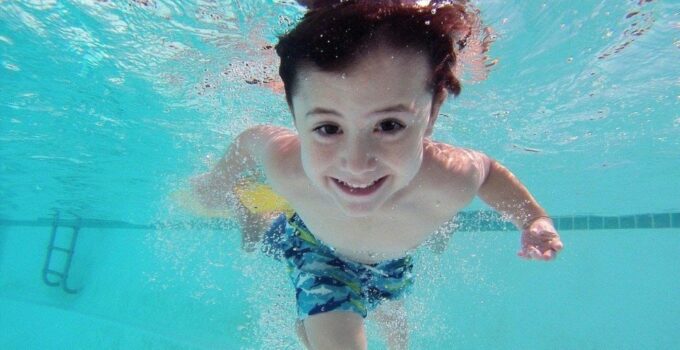In this review, we’re going to compare two popular models of pool vacuum cleaners, which are Polaris 360 and Polaris 380. Both cleaners are applicable in inground pools, have similar design, and some other features. Still, after close comparison, one can notice certain differences between Polaris 360 and 380, for more details check “IntexPoolPumps.org“. So, let’s examine the devices and make our verdict.
Page Contents
Polaris 360
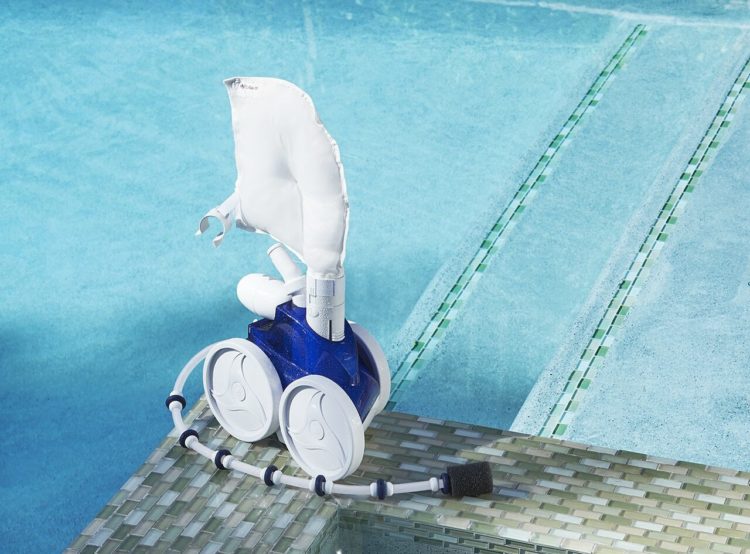
source:islandrecreational.com
Polaris 360 is a relatively new model of a pressure-side pool cleaner for inground pools. There is no strict limitation of the pool size, only mind that the cleaner has a 31 ft feed hose for free motion. One of the main advantages of the vac is that it doesn’t require a separate booster pump. For proper operation, it uses the circulation pump installed in your reservoir.
The cleaner processes the floor and the walls of the pool by vacuuming and scrubbing the dirt and large debris. Due to the TailSweep PRO hose enhancement, it can blow debris out from hard-to-reach places.
The suction of the model always stays on the same level without clogging, thanks to the triple propulsion jets. The vacuum inlet is 2 ¼.
The device applies random cleaning but tends to make circles. The clean water, which returns to the pool, pushes the vacuum and makes it move along the surface. If it gets stuck, it activates the in-line back-up valve. Nevertheless, to minimize similar kinds of interruption, the engineers equipped the cleaner with big Classic tires and all-wheel drive technology.
All the collected dirt goes into a big single chamber filter bag. This container keeps up to 2 liters of large debris, not letting it clog the pump of the filtering system. The bag is replaceable, so you can buy additional items and change them when full.
The model doesn’t possess any specialized lifting systems, but it isn’t too heavy for manual ups and downs. The item weighs 15.6 pounds. There are two color options – white and blue and Black Max.
Now a new Polaris 360 item costs about $400 on Amazon.
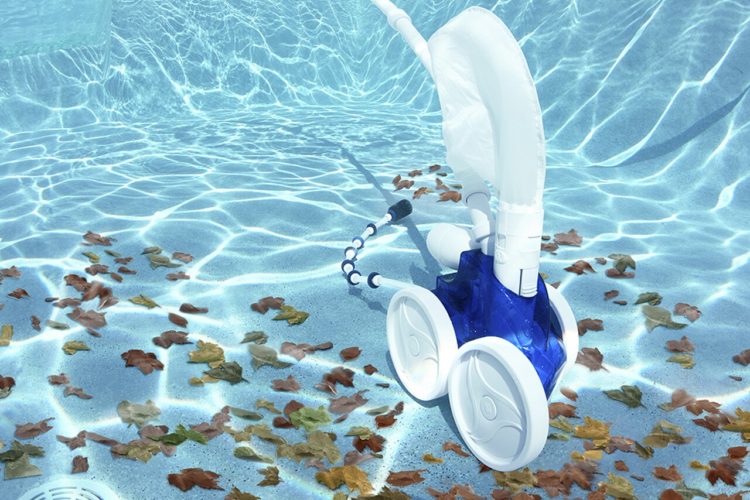
source:islandrecreational.com
Pros:
applicable in all inground pools
doesn’t require a separate booster pump
saves energy
31 ft hose with TailSweep PRO
three propulsion jets
an in-line back-up valve
all-wheel drive technology
a 2L chamber filter bag
two color options
Cons:
high price
not suitable for above ground pools
doesn’t clean steps
random cleaning
the bag needs constant checking as can provoke leaning on one side
Polaris 380
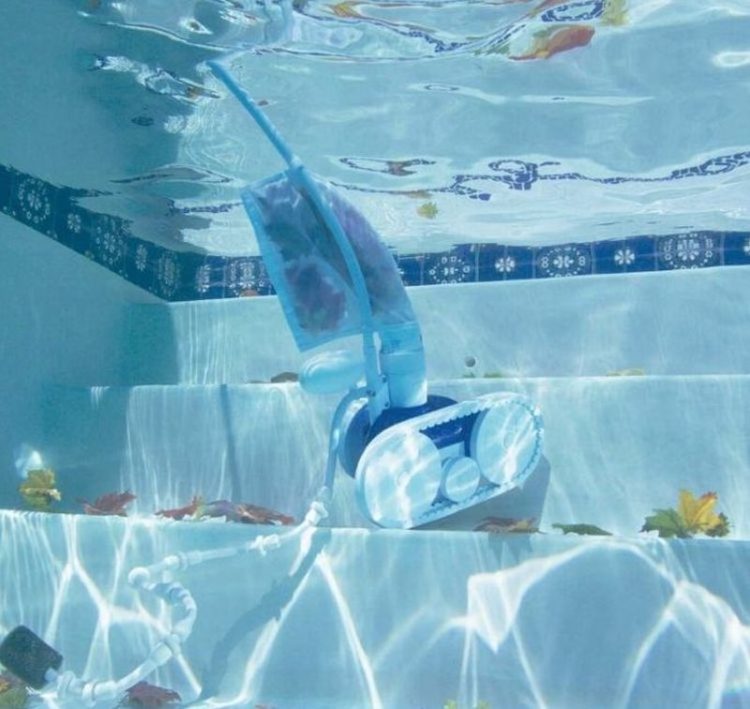
source:poolcleanerblog.com
Polaris 380 became the next step in the line of the pressure-side pool cleaners for inground reservoirs. This time, the appliance requires a separate booster pump, which is one of its main distinguishing features. The majority of other characteristics coincide with the previous Polaris 360 model.
The 380 model cleans the entire surface of the pool, including the bottom, walls, and steps. It has the same triple jets, which help avoid clogs and sustain the suction. An inlet features the same 2 ¼” output. Users say the cleaning of a medium pool will take about 2-3 hours.
A single chamber filter bag can contain up to 2 liters of debris and comes with a zip fastener. That contributes to the checking of the filling.
As for motion, Polaris 380 is equipped with three large Classic tired wheels with the all-wheel belt drive mechanism. In combination with the water pressure driving, it guarantees smooth movement, rare getting stuck, and the coverage of every patch of pool surface. Plus, there is the TailSweep PRO for challenging pollution and water elimination. An in-line back-up valve included.
The cleaner comes in a Black Max or white and blue cases, each of which has a 31 ft hose and 16.8 lb of weight.
The current price for the Polaris 380 is $650.
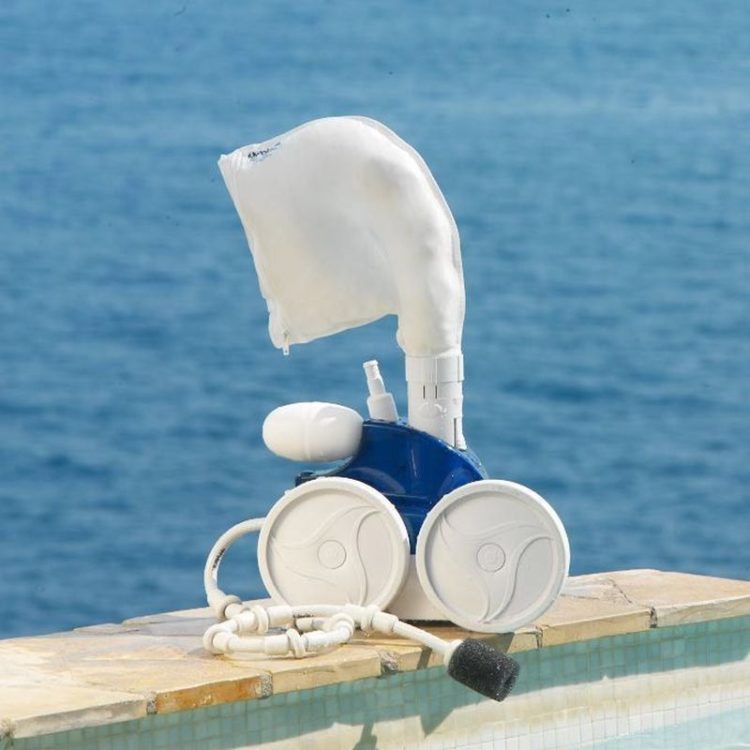
source:poolcleanerblog.com
Pros:
suitable for all inground pools
cleans not only floor & walls but also steps
powerful suction
an in-line back-up valve
31 ft hose with TailSweep PRO
three propulsion jets
all-wheel drive technology
a 2L chamber filter bag with a zipper
two color options
Cons:
high price
require a booster pump
not suitable for above ground pools
random cleaning
heavy body
the bag needs constant checking as can provoke leaning on one side
Differences in Face to Face Comparison
Design
Polaris 360 and Polaris 380 are hardly distinguishable, for they feature the same two design variants, hoses, filter bags, etc. Still, if we weigh the models, we’ll see that the 380 is a bit heavier with its 16.8 pounds compared with 15.6 lb body of the 360 cleaner.
The Need of a Separate Booster Pump
While Polaris 360 doesn’t use an additional booster pump for operation, Polaris 380 demands such an appliance for its work. The manufacturer recommends to choose the Polaris PB4 60 pump, but you’re free to get anyone you’d like. This factor forms the key difference between the vacuums.
Energy Consumption
As the 380 cleaner runs with a separate booster pump, it takes a bit more energy in comparison with Polaris 360.
Cleaning Performance
The 360 cleaner can offer thorough floor and walls vacuuming, but it won’t cope with debris on steps, stairs, and other recesses.
The 380, on the contrary, performs comprehensive cleaning of all surfaces, including steps and similar challenging areas.
Filter Bag
Both models accumulate up to 2L of debris in chamber filter bags. Nevertheless, the 360 kit comes with a standard bag, and the 380 package includes a bag with a zip fastener. Amazon offers both types of bags, so you can buy and set any you prefer better for your Polaris cleaner.
Price
Please mind that the cleaners can hardly be called budget devices. Polaris 360 costs $400.
And Polaris 380, being a younger and more productive model, demands as much as $650.
So, here are the main differences between Polaris best pressure-side pool cleaners – the 360 and the 380. We can’t say there is a lot of them, but some presented do influence cleaning and cleaning time.
Polaris 380 deals with more complicated surfaces and is more powerful. But at the same time, it requires an additional booster pump and has a heavier body, while the overpayment of $250 (compared with the price of the 360 model) seems rather inadequate.
Anyway, both devices have their pros and cons, which should be considered separately in each case. The final choice of the right pool cleaner is always up to you.

